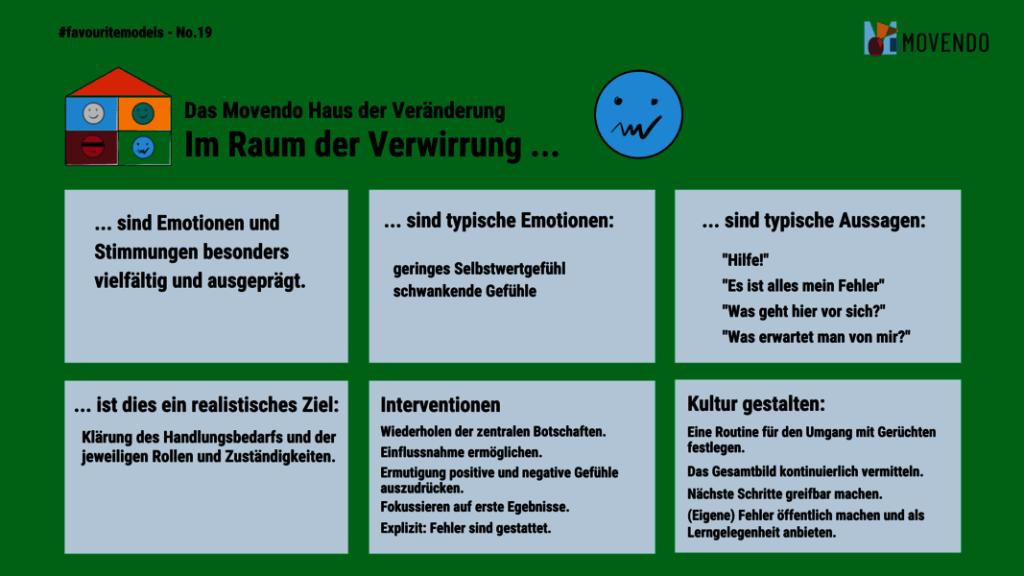Created by Susanne Stock
#favouritemodel No. 19 – House of Change – Confusion

When people move on in their emotional change process from the “space of denial” to the “space of confusion”, this does not yet mean that they fully accept the change. The big difference here, however, is that people in the “space of confusion” step out of their passivity and become active. They consciously try to understand and try out new processes and desired behaviors.

How does this #favoritemodel help you?
The best way to support your employees in the “space of confusion” is to create many opportunities for conscious learning loops. During this time in particular, it is normal and also important that mistakes are (allowed to be) made and that they are dealt with constructively. Because as soon as new behavior is to be learned, it is quite natural that not everything goes perfectly from the start. You should encourage your team to experiment and share their experiences with each other.
At the same time, it helps your employees if they receive regular and quick feedback. Make sure to give positive feedback when something is going right. This helps them to better understand the new guidelines. Small steps in the right direction and initial small successes should be appreciated regularly.
Establish a regular meeting in which you consciously reflect on the change and your experiences with it.
It is okay to repeat information about the goal and important milestones during this phase. The highly emotional nature of this phase makes it harder for people to concentrate on technical information. Through repeated, clear communication, you set the framework for the change in the long term and help your employees to find their bearings.
Author

Susanne Stock
Project partner




